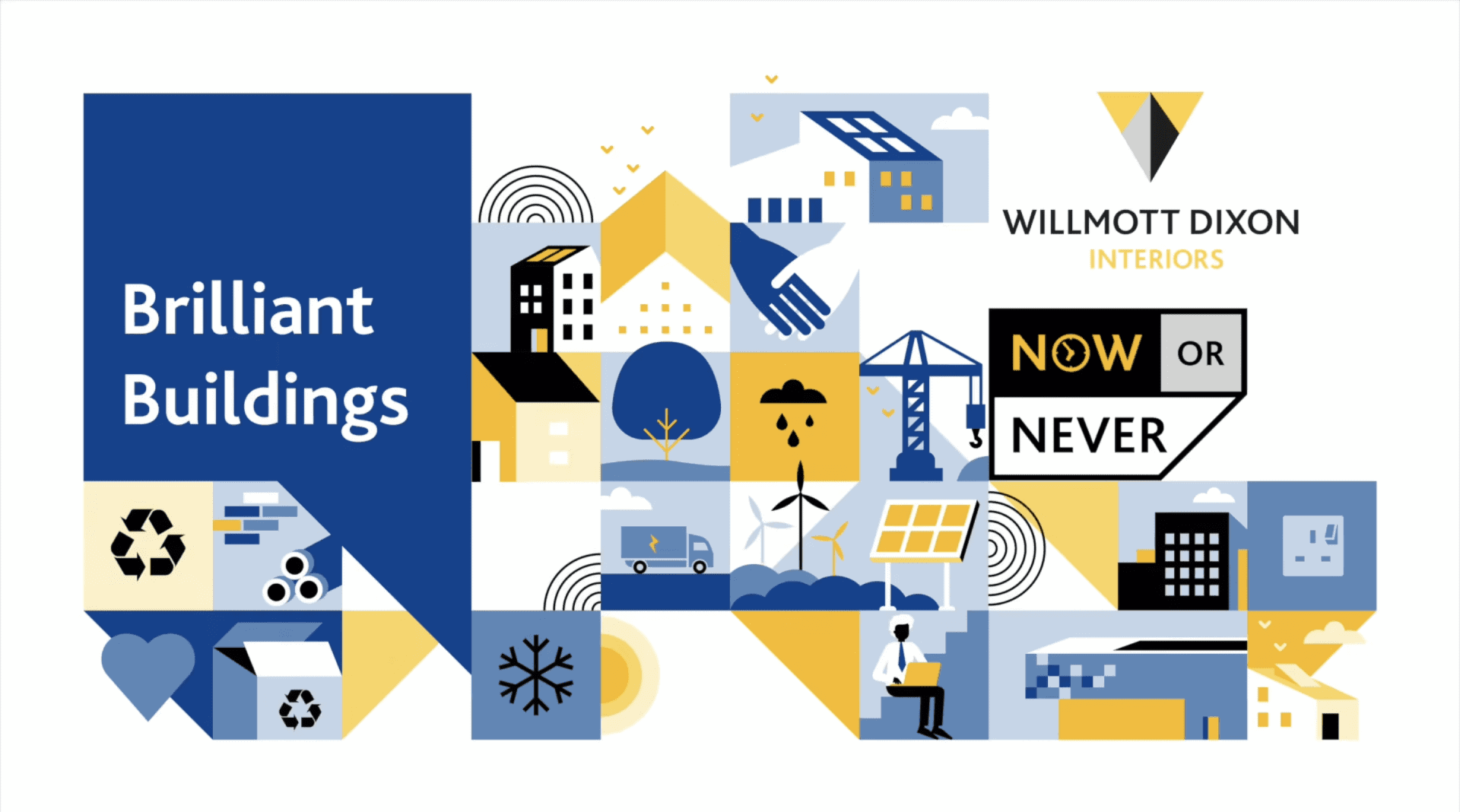Our 2030 sustainability strategy
Our Brilliant Buildings theme ensures we create developments fit for future use, whilst minimising impact on the environment. We are already at the forefront of delivering many highly sustainable buildings. Our approach has seen us create buildings that are well designed, of high quality, excellent value, and whilst built upon customer relationships. The Brilliant Building theme builds on existing experience and takes our approach to the next level. The theme covers four ambitions below.
Ambitions

UKGBC Framework defines net-zero operational carbon for a building as:
“When the amount of carbon emissions associated with the building’s operational energy on an annual basis is zero or negative. A net-zero carbon building is highly energy-efficient and powered from on-site and/or off-site renewable energy sources, with any remaining carbon balance offset.”
Steps to achieve this involve:
- Reducing energy demand for the buildings by having a fabric first approach and assessing the façade, windows, and roof insulation,
and designing efficient building services - Avoid fossil fuels by evaluating the building services design and eliminating the use of natural gas, oil, etc.
- Maximise the use of on-site renewable energy technology such as solar photovoltaic (PV) panels
- Supplying the remaining energy needs by off-site renewable energy, such as green supply, and as a last resort by using carbon
emissions offsets which are verified by a third-party - Monitor the building during the occupation to confirm performance in line with the design intent

Projections from the Met Office show that summer temperatures could be almost six degrees centigrade higher by 2070. Rainfall
patterns will also change resulting in drier summers and wetter winters.
Whether it is better insulation, increased ventilation,
improved water efficiency or flood resilience, we must ensure our buildings are truly fit for purpose both now and in the future.
We will work with our customers to understand how people interact and use buildings and how this changes over time so that we can create spaces that improve productivity, support better learning outcomes, encourage rest and recovery, and promote social connection. By enhancing health and wellbeing in this way, our buildings will improve lives and help people thrive.

Embodied carbon is defined as:
“Total greenhouse gas emissions generated to produce a built asset. This includes emissions caused from each stage: extraction, manufacture, transportation, and assembly through to deconstruction and disposal at the end of a building’s life.”
Our aim is to help our customers eliminate carbon throughout each stage. We will do this by specifying low energy and carbon intensive products, model the embodied impacts of materials from cradle through to installation, and propose better alternatives.
Working collaboratively with our design teams, consultants, customers and supply chains to help promote the best possible design alternatives is critical.

Net-zero needs to go beyond our own emissions and account for our supply chain’s emissions (Scope 3) to ensure the whole of the construction industry meets the net-zero target.
We have already started this work by being the first contractor to achieve Level 3 of the Carbon Trust’s industry-leading Supply Chain Standard. We now need to go further by working closely with all our major supply chain partners to eliminate carbon on our sites, reduce operational energy usage and carbon associated with their office and manufacturing activities, and create a more sustainable approach to transportation.
Our Strategy

Our Customers
We want the buildings we design and deliver to be brilliant.
Delivering buildings that improve people’s lives is core to what we do. They are the legacy we leave for our customers, their communities and future generations. Buildings impact on people too, in so far as the way they are designed and used affects all aspects of our health and wellbeing.
We will work with our customers to deliver buildings which are resilient to the impacts of our changing climate, conserve natural resources and specify low energy-intensive technologies. We want all of our projects to help our customers limit their carbon emissions and the cost of ownership, whilst also improving people’s health and wellbeing.

